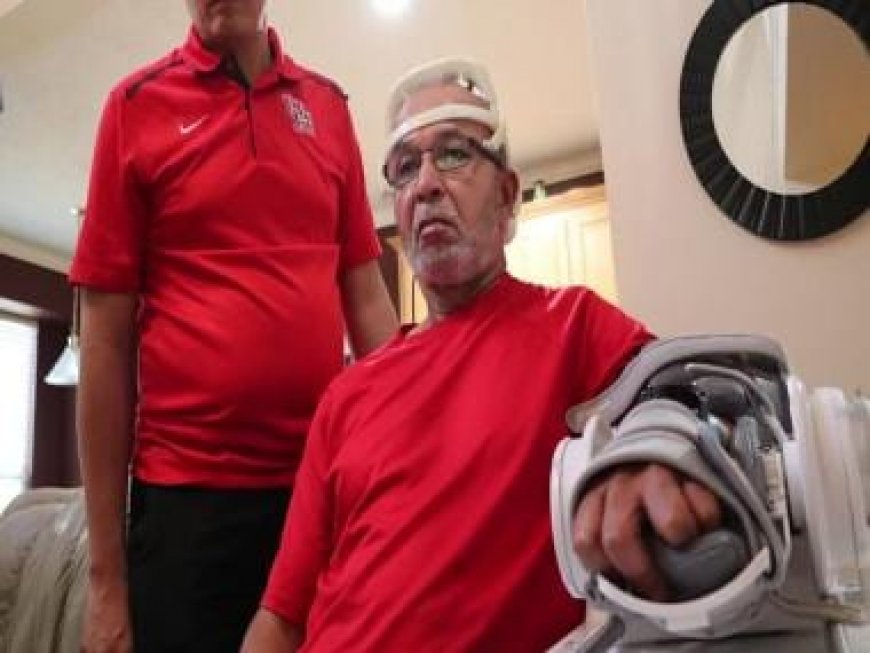What Neuralink? New non-invasive brain-reading headset is helping stroke victims control limbs, speech
What Neuralink? New non-invasive brain-reading headset is helping stroke victims control limbs, speech

A groundbreaking development in stroke rehabilitation is offering new hope to survivors. Oswald Reedus, whose life took a drastic turn in 2014 when he lost the ability to speak, walk, and move his left arm due to a sudden stroke, has become the first stroke patient to use a pioneering device created by researchers at the University of Houston.
This device, a brain-computer interface, controls a robotic arm using the wearer’s brainwaves, potentially aiding in the recovery of lost limb function.
Reedus vividly recalls the life-altering moment when he lost motor function, stating, “Around 3 o’clock in the morning, my wife said I was talking out of my head, and she woke me up and she said, ‘Move your arm.’ And I couldn’t move my arm.” At the time, he joined the ranks of an estimated 610,000 Americans who suffer their first stroke each year.
Now, nearly nine years later, Reedus and his wife, Elizabeth, have reason to be optimistic about his future.
The 68-year-old stroke survivor is the first to utilize this innovative device – a portable headset that interprets brain waves to control a robotic arm. This development represents a potential lifeline for individuals seeking to regain lost limb functionality.
Reedus, who eventually regained his ability to speak after years of therapy, still grapples with limited mobility in his left arm and uses a leg brace for walking due to aphasia resulting from the stroke.
Keen to participate in clinical trials for the experimental device, Reedus has a familial history of stroke, with both his mother and younger brother succumbing to the condition.
The brain-computer interface headset features five electrodes placed on the wearer’s scalp to measure brain waves via electroencephalography (EEG). These electrical impulses prompt the connected robotic arm to move, with the wearer’s intention playing a crucial role in the arm’s motion.
Engineered by University of Houston professor Jose Contreras-Vidal, the headset’s design aims to encourage a phenomenon known as neuroplasticity, where the brain rewires itself to restore limb function through the interaction between the wearer’s thoughts, the robotic arm’s movement, and feedback to the brain.
This headset, connected to either a robotic arm or exoskeleton, holds the potential to offer an at-home option for stroke rehabilitation.
The device is currently undergoing clinical trials in collaboration with TIRR Memorial Hermann Hospital in Texas. Dr Gerard Francisco, a stroke rehabilitation specialist, believes that robots could soon complement the work of physical therapists by providing consistent, repetitive movement. He emphasizes the importance of repetition in rewiring the brain for movement recovery.
Reedus used the headset and robotic arm for six weeks in his rehabilitation, highlighting how it helped him emerge from isolation and depression he had been battling for eight years post-stroke. He expressed optimism about the potential of such technology but underscored the need for affordability and insurance coverage for wider access.
However, it’s important to note that the device is still in its developmental and fundraising stages. The team behind it is working to secure funding for a larger clinical trial and eventually apply for FDA approval. While there is significant promise in this cutting-edge rehabilitation technology, it may take time before it becomes accessible to the wider public.
What's Your Reaction?


























































